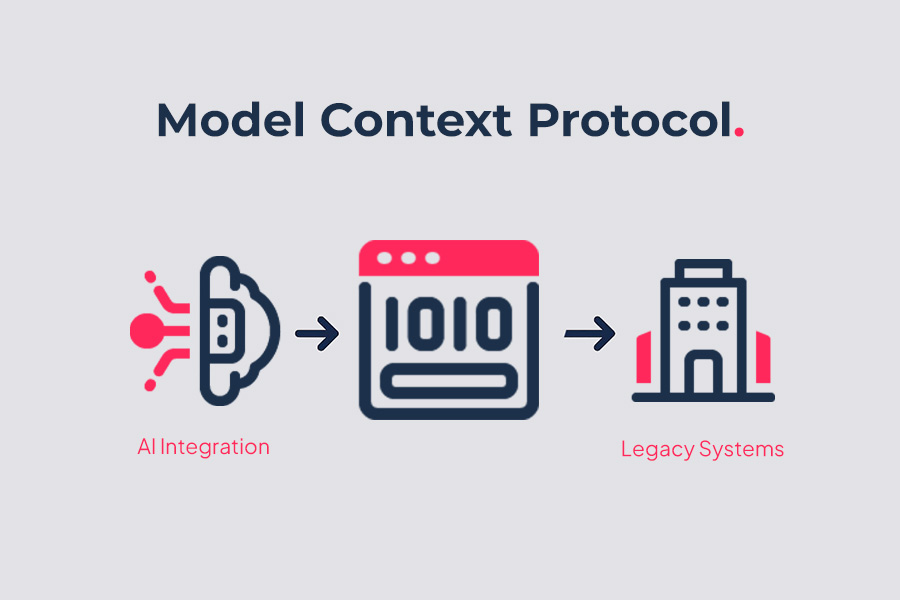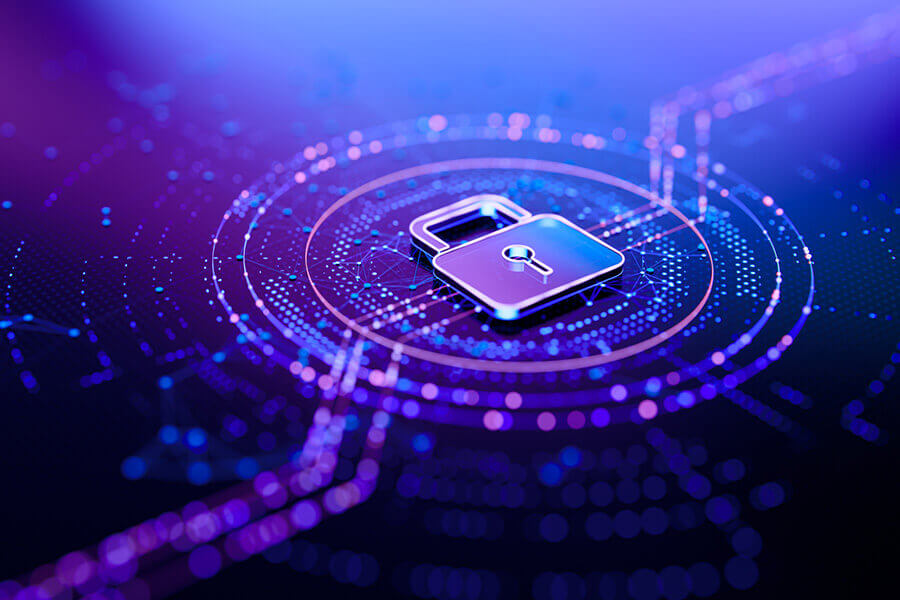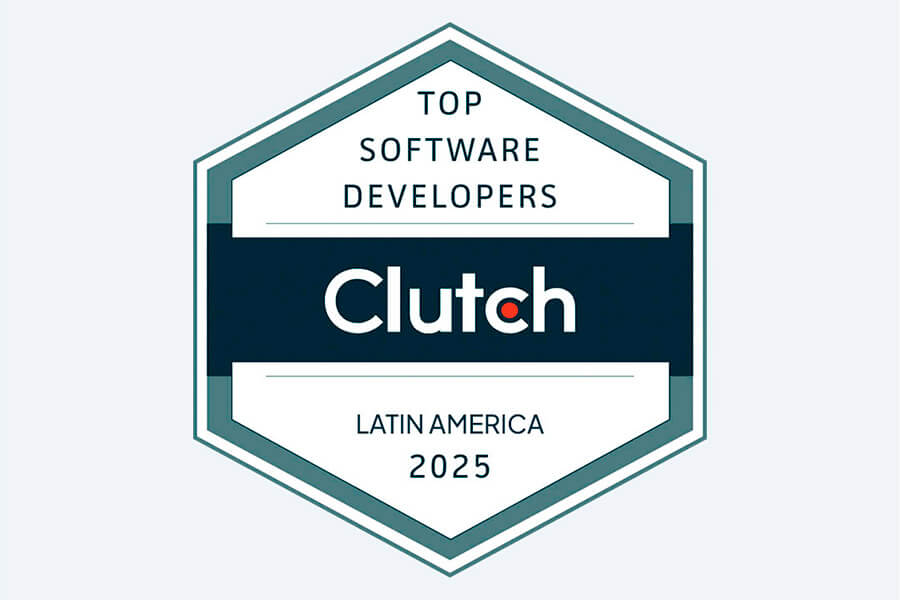Model Context Protocol: The Missing Link in Scalable AI Integration
The integration of artificial intelligence into enterprise systems has historically been fragmented, with organizations struggling to connect AI models to their existing data sources and tools effectively. Each integration required custom solutions, creating inefficiencies and limiting the scalability of AI implementations across different platforms and environments.
The Model Context Protocol (MCP) addresses this challenge by providing an open, standardized integration layer that connects AI models to external tools, data sources, and services uniformly. This protocol functions similarly to how USB-C standardized device connections, offering a consistent method for AI applications to access and utilize diverse resources without requiring bespoke integration approaches.
Organizations can now implement AI solutions more efficiently through MCP’s standardized framework, which enables seamless connectivity between language models and enterprise systems. The protocol facilitates real-time, context-aware decision-making while addressing the complexities that arise when AI agents connect to data and tools distributed across cloud and on-premises environments.
Model Context Protocol: Standardizing AI Integration
The Model Context Protocol establishes a unified framework that eliminates the complexity of connecting AI models to external systems through standardized communication patterns. This transforms how AI applications access data sources and tools by providing consistent integration methods across different platforms.
The Rationale for Standardization in AI Integration
AI integration currently requires developers to write custom integration code for each connection between AI models and external systems. This fragmented approach creates maintenance overhead and limits scalability when organizations deploy multiple AI applications.
The Model Context Protocol addresses these challenges by providing a standardized method for LLMs to interact with external systems. Organizations no longer need to develop unique API connectors for each AI application.
Anthropic introduced MCP in late 2024 to solve the AI integration problem at scale. The protocol functions like a universal connector that allows AI agents and AI assistants to communicate with various tools and resources through consistent interfaces.
Traditional integration approaches require separate custom code for each connection. MCP eliminates this redundancy by establishing standard communication protocols that work across different AI applications and external systems.
The standardization benefits extend beyond technical simplification. Organizations can deploy AI solutions faster when integration patterns remain consistent across different use cases and platforms.
Core Architecture and Components of MCP
MCP operates on a client-server architecture where AI applications act as clients and data sources function as servers. This design enables AI models to request information and execute operations through standardized communication channels.
The protocol includes three primary components:
- MCP clients that initiate requests from AI applications
- MCP servers that provide access to external resources
- MCP hosts that manage the communication between clients and servers
JSON-RPC 2.0 serves as the underlying communication protocol for message exchange. This ensures consistent data formatting and error handling across all MCP implementations.
MCP supports multiple transport mechanisms, including stdio for local processes and Server-Sent Events (SSE) for remote connections. These options accommodate different deployment scenarios from local data sources to remote services.
The architecture separates the AI application layer from the resource access layer. This separation allows developers to modify or replace either component without affecting the other parts of the system.
How MCP Improves AI Interoperability
MCP enables AI agents to connect with multiple external systems using identical integration patterns. This consistency reduces the learning curve for developers who work with different AI platforms and data sources.
The protocol supports both local data sources and remote services through the same interface. AI applications can access file systems, databases, web services, and custom tools without requiring different integration approaches for each resource type.
Interoperability extends to different LLMs and AI models that can utilize the same MCP servers. Organizations avoid vendor lock-in because their integration investments work across multiple AI platforms.
The open standard nature of MCP ensures that implementations remain compatible as the protocol evolves. This stability protects long-term investments in integration while enabling innovation in AI capabilities.
MCP transforms AI applications into more dynamic and context-aware systems by simplifying access to real-time data. The standardized approach reduces integration complexity while expanding the range of tools available to AI agents.
Practical Implementation and Benefits of MCP in AI Ecosystems
MCP establishes secure communication channels between AI systems and external resources while providing standardized interfaces for complex workflows. The protocol enables scalable authentication mechanisms and seamless interoperability across diverse development environments.
Establishing Secure and Scalable AI Connections
MCP implements robust authentication protocols that protect data transmission between AI assistants and external systems. The protocol establishes encrypted channels for secure communication, ensuring that sensitive database queries and function calls remain protected during execution.
Security Features:
- End-to-end encryption for all message transmissions
- Token-based authentication for resource access control
- Permission management for specific tool interactions
The scalability aspect allows organizations to connect multiple AI tools without creating separate integration points for each service. MCP’s standardized communication framework reduces overhead by maintaining consistent connection protocols across different platforms.
Development teams can implement connection pooling and load balancing through MCP’s architecture. This approach supports enterprise-level deployments where hundreds of AI agents require simultaneous access to shared databases and external APIs.
Enabling Advanced Tool and Resource Access
MCP transforms how AI systems interact with databases, APIs, and specialized tools through its standardized message format. AI assistants can execute complex database queries, call external functions, and access real-time data sources without requiring custom integration code for each tool.
The protocol supports dynamic tool discovery, allowing AI systems to identify available resources and their capabilities automatically. This eliminates the need for hardcoded tool configurations in AI applications.
Tool Integration Capabilities:
| Resource Type | Access Method | Authentication |
| SQL Databases | Query execution | OAuth/API keys |
| REST APIs | Function calls | Token-based |
| File Systems | Direct access | Permissions |
| Web Services | HTTP requests | SSL certificates |
Through MCP, AI assistants can chain multiple tool interactions within a single workflow. For example, an AI can query a customer database, process the results through an analytics API, and generate reports using document creation tools seamlessly.
Integrating MCP with Modern AI Development Environments
Popular AI development platforms have adopted MCP as their primary integration standard. Claude Desktop and other AI applications now support native MCP implementations, allowing developers to connect external resources through standardized interfaces.
Development Environment Support:
- IDE plugins for MCP configuration management
- SDK libraries for multiple programming languages
- Testing frameworks for MCP connection validation
The protocol integrates with open-source development workflows through containerized deployments and CI/CD pipelines. Developers can package MCP configurations as reusable components, enabling consistent AI tool integration across different projects.
MCP’s universal interface design allows teams to switch between different AI models while maintaining the same external tool connections. This interoperability reduces vendor lock-in and simplifies AI ecosystem management.
Modern user interfaces can expose MCP capabilities through drag-and-drop configuration tools. These interfaces allow non-technical users to establish AI tool connections without writing custom integration code.
Conclusion
Today, the Model Context Protocol is the bridge that turns isolated AI tools into connected, scalable systems. By eliminating integration bottlenecks and creating a common language between models, data, and tools, MCP empowers organizations to move faster, adapt smarter, and unlock AI’s full enterprise potential.
In a world where agility defines winners, MCP is the missing link that makes AI truly enterprise-ready.







